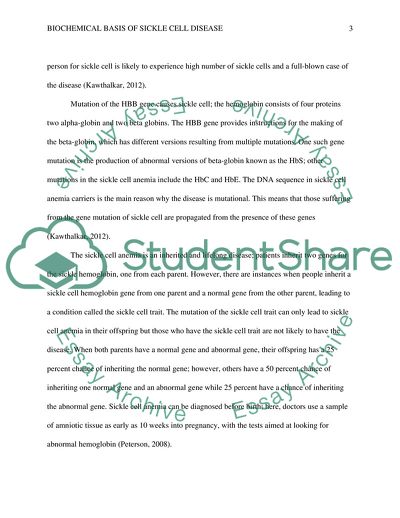Cite this document
(Biochemical Basis of Sickle Cell Disease Essay Example | Topics and Well Written Essays - 1750 words, n.d.)
Biochemical Basis of Sickle Cell Disease Essay Example | Topics and Well Written Essays - 1750 words. https://studentshare.org/biology/1819780-describe-the-biochemical-basis-of-a-disease-that-is-a-result-of-a-single-gene-disorder
Biochemical Basis of Sickle Cell Disease Essay Example | Topics and Well Written Essays - 1750 words. https://studentshare.org/biology/1819780-describe-the-biochemical-basis-of-a-disease-that-is-a-result-of-a-single-gene-disorder
(Biochemical Basis of Sickle Cell Disease Essay Example | Topics and Well Written Essays - 1750 Words)
Biochemical Basis of Sickle Cell Disease Essay Example | Topics and Well Written Essays - 1750 Words. https://studentshare.org/biology/1819780-describe-the-biochemical-basis-of-a-disease-that-is-a-result-of-a-single-gene-disorder.
Biochemical Basis of Sickle Cell Disease Essay Example | Topics and Well Written Essays - 1750 Words. https://studentshare.org/biology/1819780-describe-the-biochemical-basis-of-a-disease-that-is-a-result-of-a-single-gene-disorder.
“Biochemical Basis of Sickle Cell Disease Essay Example | Topics and Well Written Essays - 1750 Words”. https://studentshare.org/biology/1819780-describe-the-biochemical-basis-of-a-disease-that-is-a-result-of-a-single-gene-disorder.


